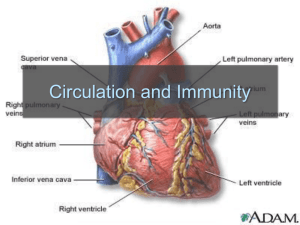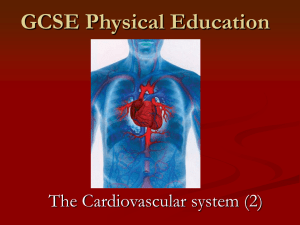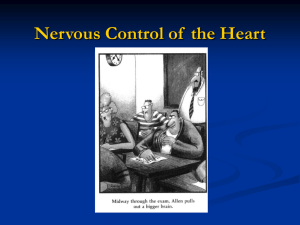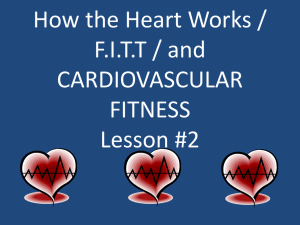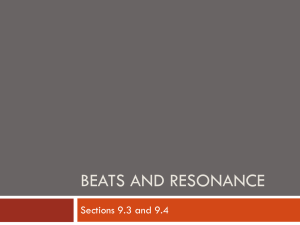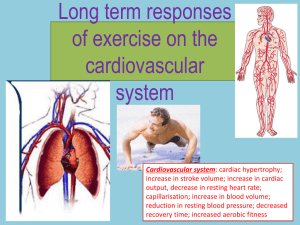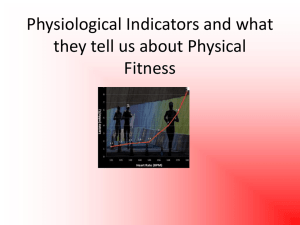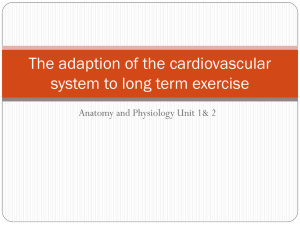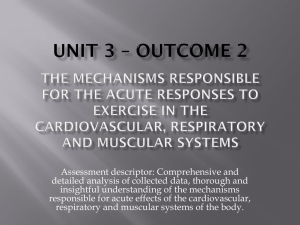Long Term Effects of Exercise on the Body Systems
advertisement
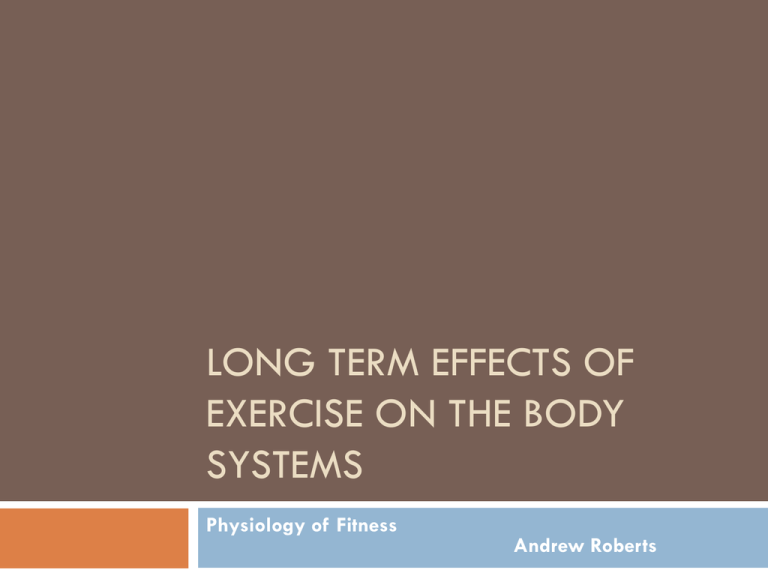
LONG TERM EFFECTS OF EXERCISE ON THE BODY SYSTEMS Physiology of Fitness Andrew Roberts Long Term Effects of Exercise on the Body Systems 1. 2. 3. 4. 5. 6. What body systems do we mean? Cardiovascular Respiratory Energy systems Muscular Skeletal CREMS As you exercise regularly your body adapts – you become fitter – more able to cope with the demands of exercise. We are going to look at what changes occur in the heart, lungs, muscle, skeleton and energy systems. Learning Outcomes Identify the 5 main body systems that are affected by long term exercise Describe 3 key changes to the cardiovascular system after long term exercise (e.g. after 6 weeks) Identify 2 changes to the energy systems as an adaptation to long term exercise Examine and record our current level of cardiovascular fitness Long Term Effects of Exercise on the Cardiovascular System What is the CV system? The heart and blood vessels of the circulatory system Task In pairs list what aspects of the cardiovascular system may change as a result of regular long term exercise? In fours, compare results and see if you can add to your original list. Heart Cardiac Hypertrophy The heart increases in its size and blood volume. The wall of the left ventricle thickens ..why? to increase the strength potential of its contractions In sedentary, middle aged individuals it may be as high as 100 beats/min. Normal heart rate (HR) 60-80 beats / min Elite endurance athlete’s HR 28 – 40 bpm CV system cont... Increase in Stroke Volume SV = The amount of blood that can be pumped by the heart per beat. This means the heart can now pump more blood per minute. Why is this beneficial? Increased blood flow allows for faster and more efficient delivery oxygen and nutrients In untrained individuals stroke volume at rest it averages 50-70ml/beat increasing up to 110130ml/beat beat during intense, physical activity. In elite athletes resting stroke volume averages 90-110ml/beat increasing to as much as 150220ml/beat CV system cont... Increased Cardiac Output (CO) SV X HR = CO As SV and HR increase during exercise CO will increase. In a trained heart both SV and HR have increased capacity. SV does increase to a point – however the significant increases in CO are caused by a bigger increases in heart rate Untrained REST MAX EXERCISE SV 60ml/beat 120ml/beat X X X HR 70 beats/min 130 beats/ min = = = CO 4200ml/min 15600ml/min Elite REST MAX EXERCISE SV 100ml/beat 200ml/beat X X X HR 40 beats/ min 180 beats/ min = = = CO 4800ml/min 36000ml/min CV system cont... Discussion Eg An untrained student’s heart rate was measured at 140bpm while running 6mph on the treadmill After 6 weeks of exercise (running for 30 mins 3 times per week) I would expect HR decrease increase to 1. Why? 2. What physiological changes would have occurred? CV system cont... Decreased resting heart rate With regular training your resting HR falls. Also your HR returns to normal quicker after exercise. How could you measure these improvements over your 6 week program? Capillarisation Capillary networks increase to your cardiac and skeletal muscle. This improves blood supply to the active muscles and improves the muscles’ efficiency CV system cont... Increase in Blood Volume Your blood volume is the amount of blood circulating in your body It increases as an adaptation to regular exercise It increases as a result of capillarisation Reduction in Resting Blood Pressure What are the 2 measurements of BP? 1. Systolic 2. Diastolic Research shows that the quicker your BP returns to normal the fitter you are. How could you measure this? Regular exercise can contribute to lowering BP. CV system cont... Decreased Recovery Time HR recovery is a measure of how much your HR falls the first minute after exercise. Fit people can recover more quickly. How? The CV system has adapted and become more efficient through the demands of regular exercise Increased Aerobic Fitness This occurs as a result of what kind of training? Aerobic training e.g.? Running, cycling... Aerobic fitness refers to endurance, or the ability to sustain work for prolonged periods. How can you measure an improvement in aerobic fitness? Recap TASK In pairs, recall at least 3 key changes to your CV system as a result of long term exercise? 1. Cardiac hypertrophy 2. Increased SV 3. Increased CO 4. Decreased resting HR 5. Capillarisation 6. Increase in blood volume 7. Reduction in resting BP 8. Decreased recovery time 9. Increased aerobic fitness Long Term Effects of Exercise on the Energy System Task In pairs Exercise can cover a wide range of meanings ....what exercise are we considering? On a flip chart write exercise in the middle and jot down what exercise means to you. Type Intensity Frequency Duration Long Term Effects of Exercise on the Energy Systems Type Intensity Frequency Duration What systems does our body use to supply energy to our muscles? ATP-CP 1-10 secs 10s – 2mins Lactic Acid energy system Aerobic Energy system 2 mins + Long Term Effects of Exercise on the Energy Systems 1. 2. At cellular level muscles need what to ATP contract? What adaptations may occur at cellular level ? Increase in level of enzymes for aerobic and anaerobic systems. Increase in size of mitochondria. Increased use of fat as an energy source Fat combustion powers almost all exercise at 25% of aerobic power. Fat oxidation increases if exercise extends to long periods as glycogen depletes Trained athletes burn more fat as fuel than non-trained athletes. Long Term Effects of Exercise on the CV & Energy Systems Paired Task Identify 2 changes to the energy systems as an adaptation to long term exercise Describe 3 key changes to the CV system and how you may examine record those changes before and after a 6 week training program
